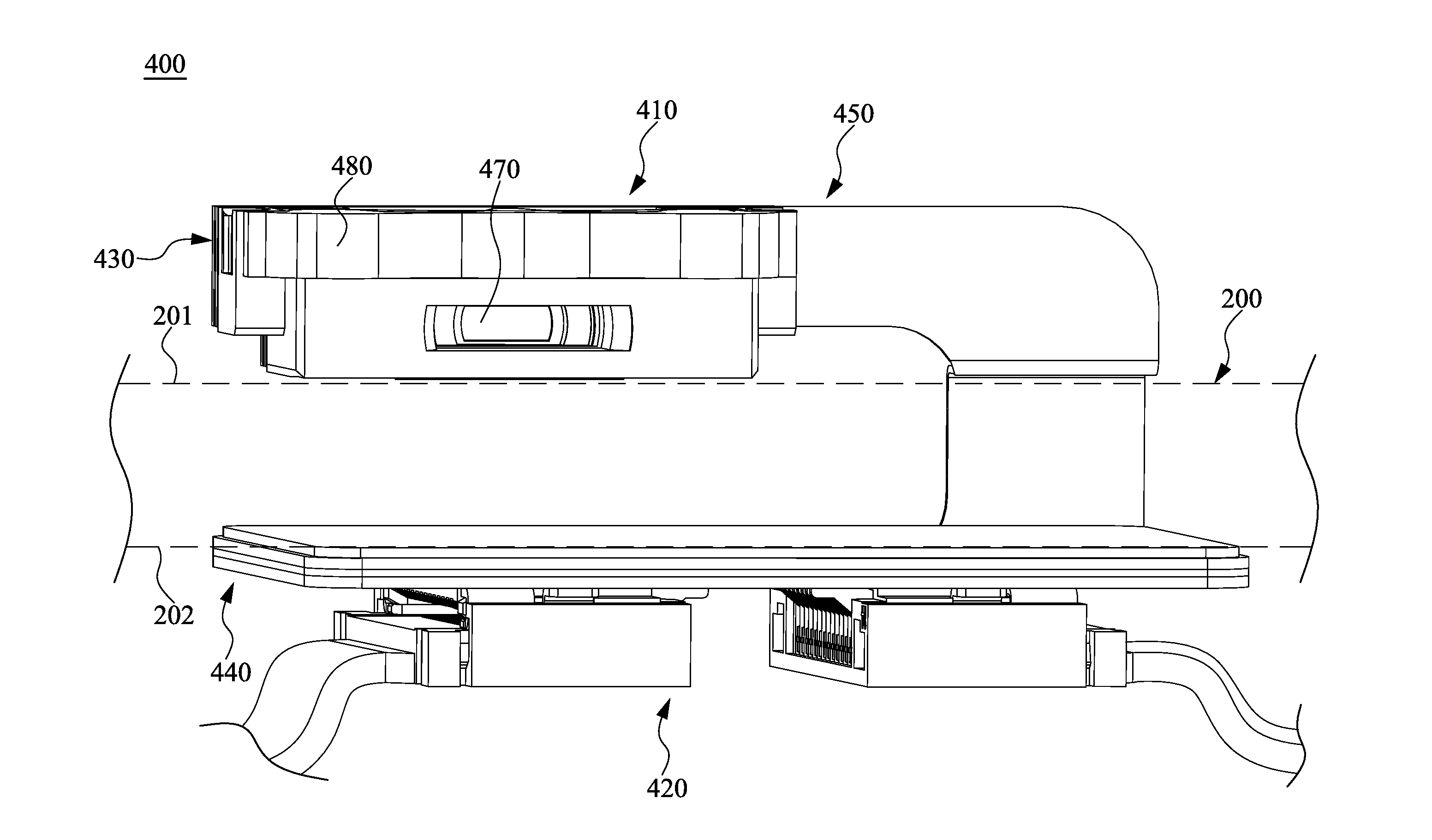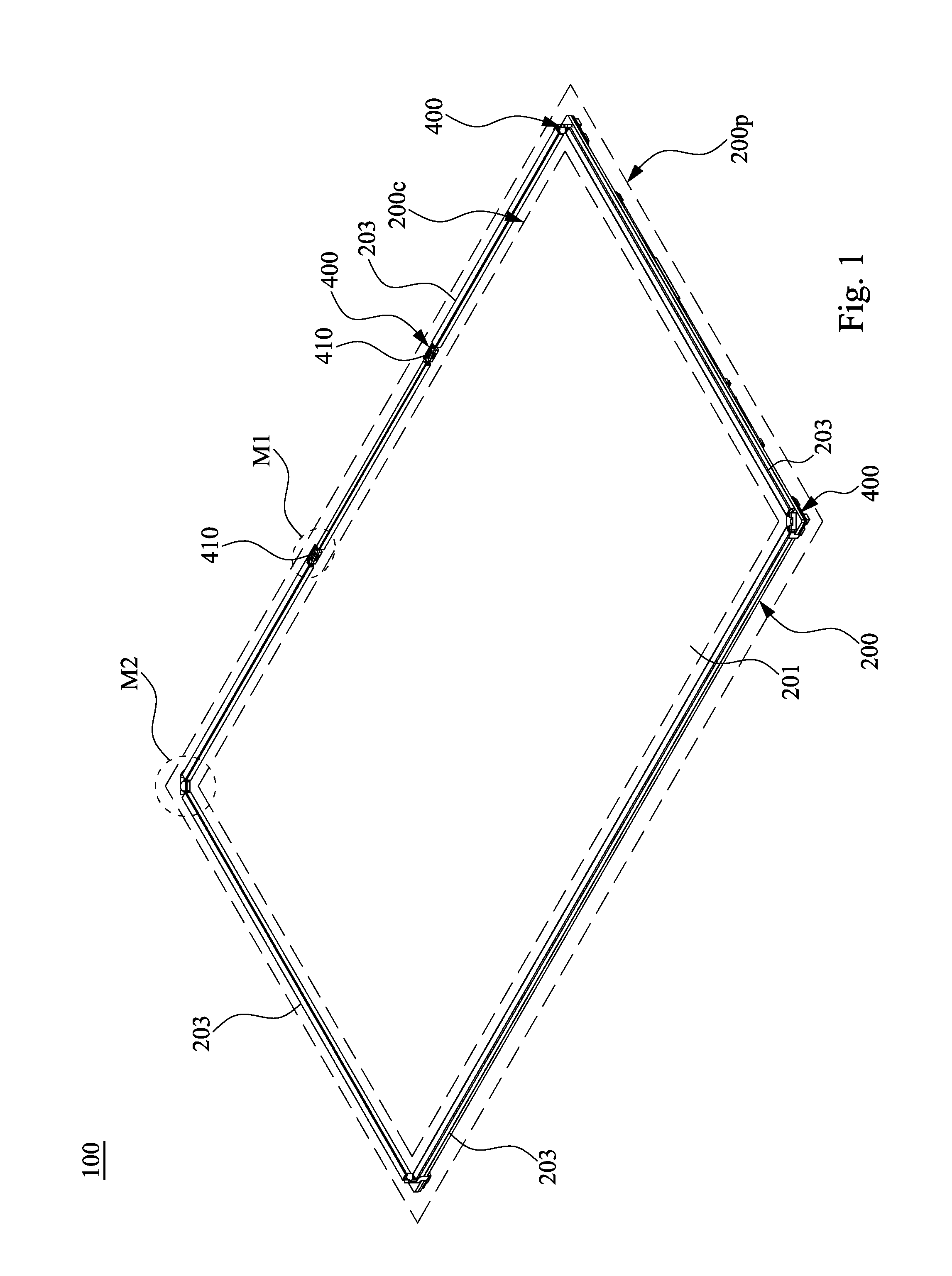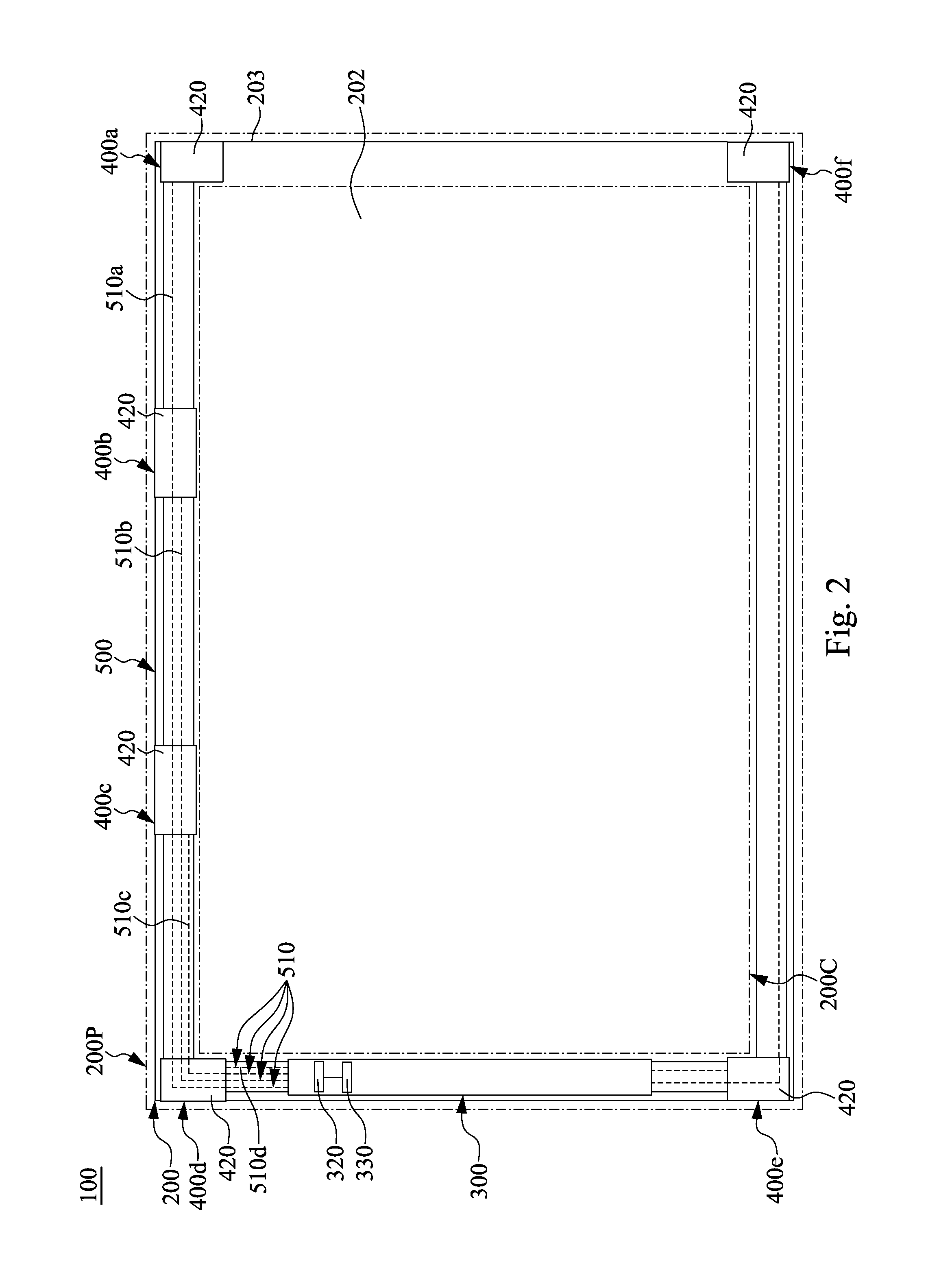Optical multi-touch device and its optical touch module
- Summary
- Abstract
- Description
- Claims
- Application Information
AI Technical Summary
Benefits of technology
Problems solved by technology
Method used
Image
Examples
Embodiment Construction
[0020]The spirit of the disclosure will be described clearly through the drawings and the detailed description as follows. Any of those of ordinary skills in the art can make modifications and variations from the technology taught in the disclosure after understanding the embodiments of the disclosure, without departing from the sprite and scope of the disclosure.
[0021]Reference is now made to FIG. 1 and FIG. 2 in which FIG. 1 is a front view showing the optical touch module 100 according to one embodiment of the present disclosure, and FIG. 2 is a rear view showing the optical touch module 100 according to this embodiment of the present disclosure.
[0022]As shown in FIG. 1 and FIG. 2, the present disclosure provides an optical touch module 100. The optical touch module 100 includes a glass panel 200, a control board unit 300 and a plurality of optical sensing sets 400.
[0023]The glass panel 200 includes a front surface 201, a rear surface 202 opposite to the front surface 201, and a ...
PUM
 Login to View More
Login to View More Abstract
Description
Claims
Application Information
 Login to View More
Login to View More - R&D
- Intellectual Property
- Life Sciences
- Materials
- Tech Scout
- Unparalleled Data Quality
- Higher Quality Content
- 60% Fewer Hallucinations
Browse by: Latest US Patents, China's latest patents, Technical Efficacy Thesaurus, Application Domain, Technology Topic, Popular Technical Reports.
© 2025 PatSnap. All rights reserved.Legal|Privacy policy|Modern Slavery Act Transparency Statement|Sitemap|About US| Contact US: help@patsnap.com



